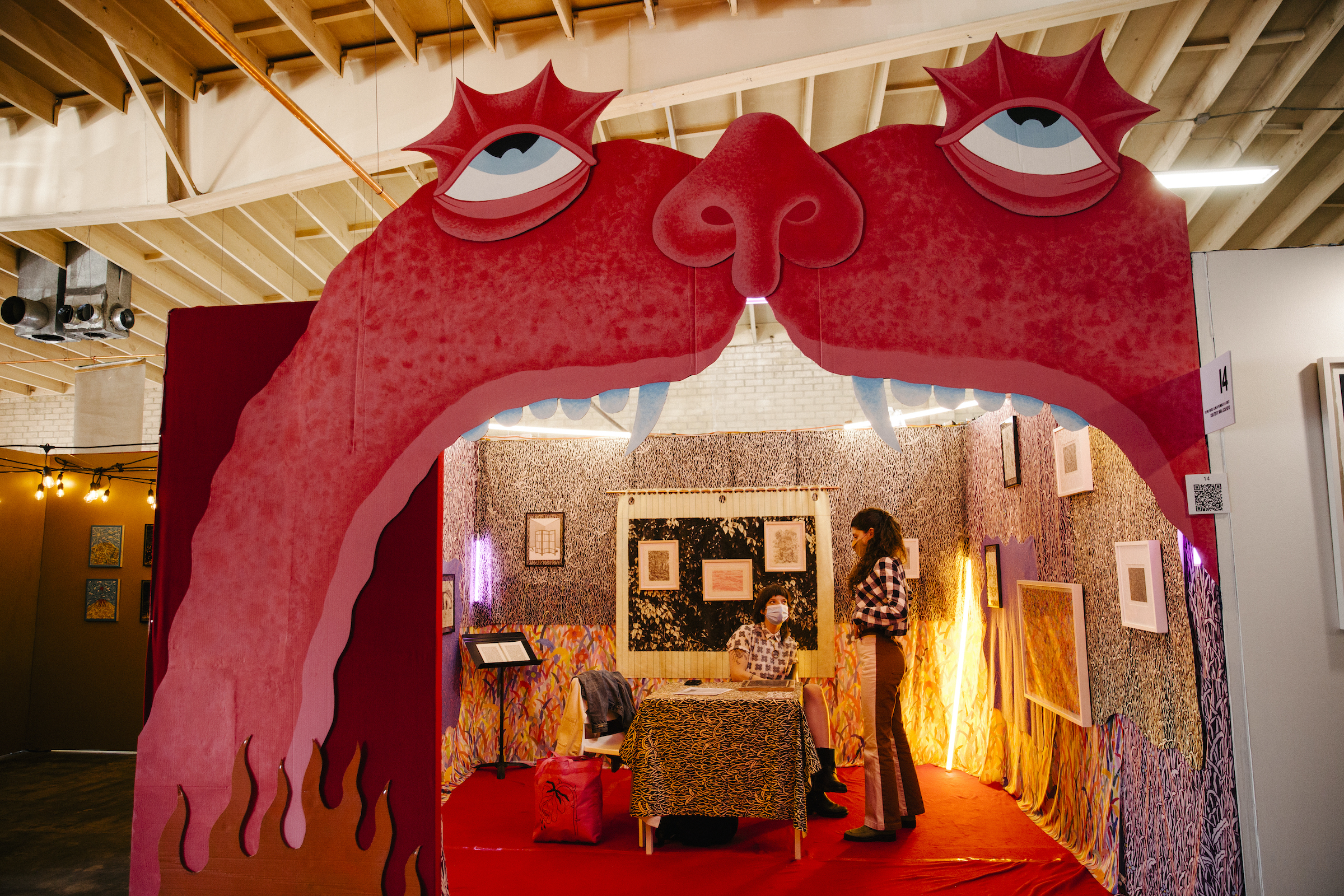LOS ANGELES — The Spring Break Art Show has cancelled its upcoming LA fair, which was scheduled to take place from February 18 through 23, concurrently with Frieze LA, Felix, The Other Art Fair, and the newcomer Santa Monica Post Office. In a letter sent to participants on Tuesday, January 28, reviewed by Hyperallergic, Spring Break co-founders Ambre Kelly and Andrew Gori cited the recent wildfires that tore through Pacific Palisades and Altadena as a major motive behind their decision.
“[W]e now feel firmly that the proximity to this ecological tragedy is just too close to ensure success for our exhibitors or a meaningful contribution to the climate or cultural problem at hand,” Kelly and Gori told participants.
They went on to cite two other factors: “market saturation” resulting from five art fairs taking place at once, and the timing of this year’s fairs to coincide with LA’s “winter break” or “ski week” — referring not to a pause in public school operations but to a “staple for many private schools in the region,” Kelly and Gori explained in an email to Hyperallergic.
Because Spring Break “subsists on the engagement of artist communities with those of collectors and patrons,” they said, numerous attendees had voiced concerns about this scheduling overlap.
But the blazes that consumed swaths of the region in January and the “trepidation of collectors and participants to attend either for personal or moral reasons” ultimately led them to call off the 2025 show.
“After the fires, of course, and the subsistence of ecological fears of air quality, water quality, and a general malaise hanging over the city from the damage done, we now know of many in the patron demographic who will not be flying in even from outside the city,” Kelly and Gori told Hyperallergic.
The pair said they polled their 2025 fair participants before making a decision and found that 30% of exhibitors, mostly out-of-towners, had health-related concerns and worried about taking away temporary housing from people affected by the fires.
Spring Break will instead host an online show, opening February 18, and participants in the virtual exhibition will be guaranteed a spot in the fair’s New York City edition in May. A portion of proceeds from online sales will benefit wildfire victims through the LA Arts Community Relief Fund (coming out of the fair’s percentage rather than participants’, organizers clarified).
Despite these concessions, some exhibitors and community members expressed frustration at the news, emphasizing the need for the art world’s presence and support at a time of mass loss.
“They were one of the only other fairs where artists could participate without gallery affiliation,” Nicole Garton, director of the Other Art Fair, told Hyperallergic, adding that her fair would try to accommodate Spring Break participants who were still interested in exhibiting that week.
“We are just really disappointed in their decision to cancel the in-person fair, especially given that all the other fairs decided to move forward,” a curator participating in this year’s edition who asked to remain anonymous told Hyperallergic. “While I think it’s great they want to offer a virtual fair that donates a portion to charity, as well as offering us the option to show in NYC, I know in our case we really just wanted an opportunity to show in Los Angeles and connect with the community here.”
Spring/Break was founded by Kelly and Gori in New York in 2009 as a scrappy, DIY alternative to the more polished art fairs, offering artists and independent curators an opportunity to exhibit in historic and unoccupied buildings. Unlike other fairs that charge exhibitors fees up front to participate, Spring Break only takes a cut of sales after the fair ends.
“For us, shouldering overhead so our participants don’t have to, we’re uniquely disinclined, in our structure, to lead our participants down a primrose path just to push ahead, and I think this has led to us taking more seriously some assessments of ecological and social hurdles newly cropping up in the arts week ahead,” Kelly and Gori explained.
“Where other larger fairs — well intentioned though they may be — are in the black only the second they open their doors, no matter who does or does not attend or does or does not collect, their exhibitors are on the hook for their larger booth expenditures regardless of who comes through,” they added.
The fair’s low overhead, lack of obligations to a board or to shareholders, and overall nimbleness and flexibility allows it to make “shift decisions to protect our participants in a way larger fairs may not be,” Kelly and Gori explained.
Beyond these tangible considerations, though, the organizers also invoked the current political landscape, including the Trump administration’s denial of the climate emergency and rollback of climate policies as well as the broader “culture of fear and censorship” impacting artists expressing particular ideologies.
“Focusing on selling art right now weeks after a fiery decimation, in a city whose ground zero is the epicenter of one of the biggest issues affecting our planet — one being perpetrated, also, by military and colonial imperatives to boot — may not be the best use of everyone’s time we’re also feeling, from an ideological standpoint, as we consider the other issues mentioned above from a practical one,” Kelly and Gori said.

